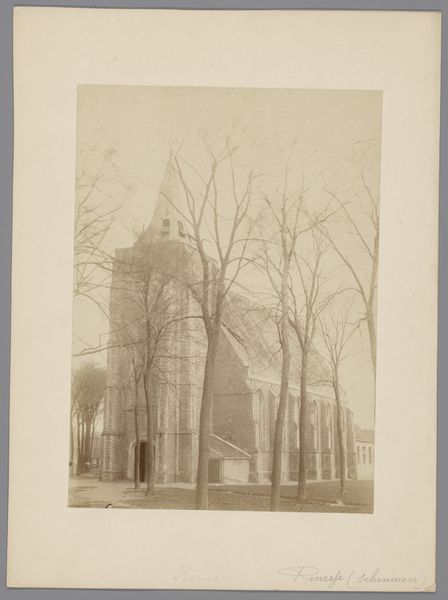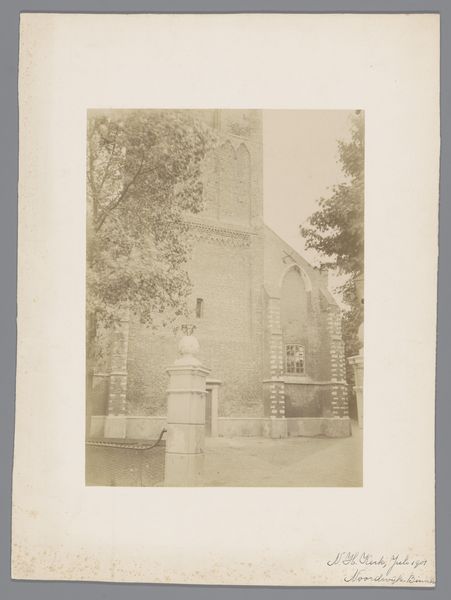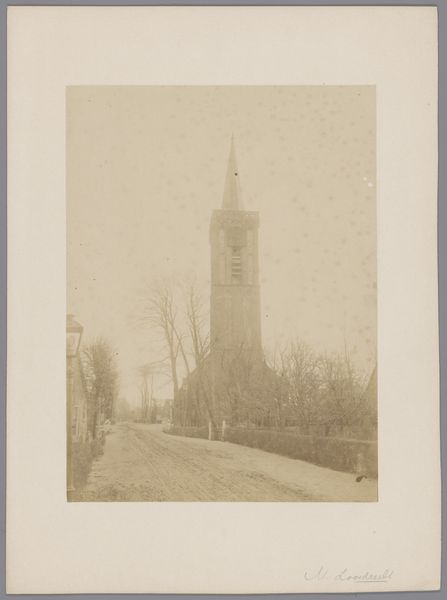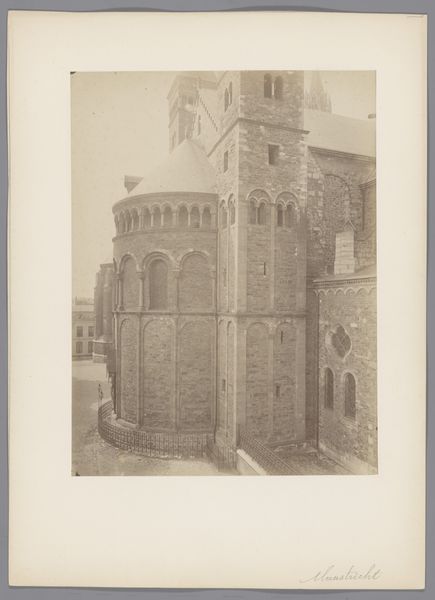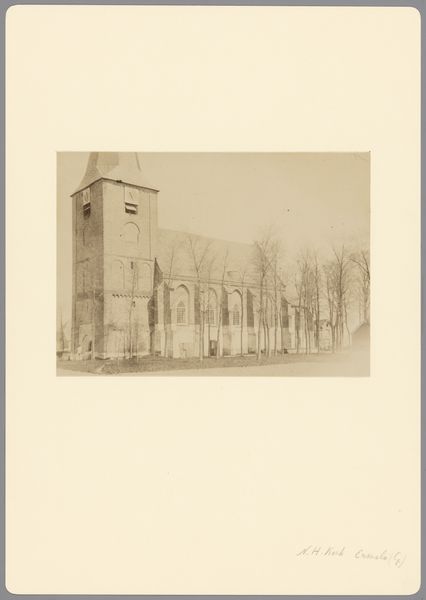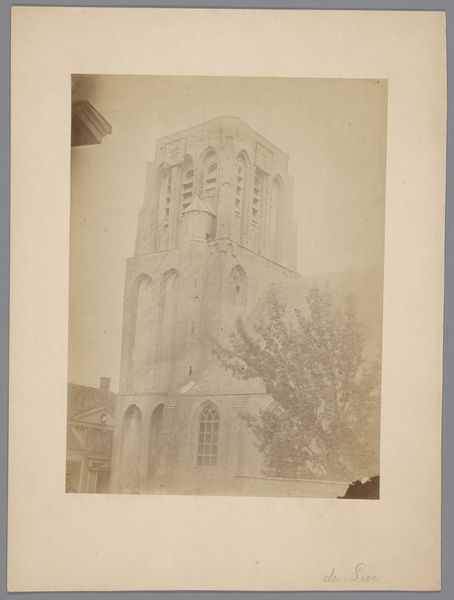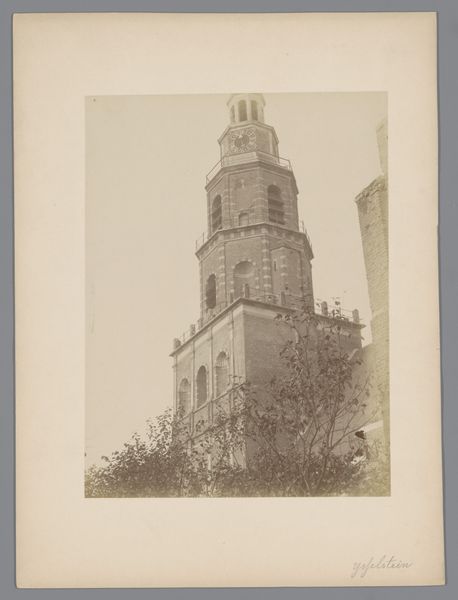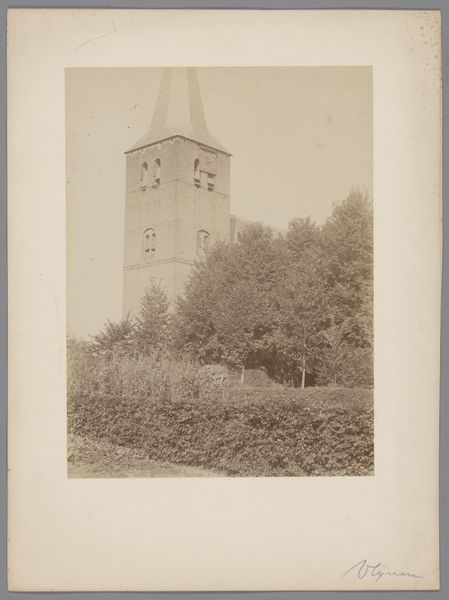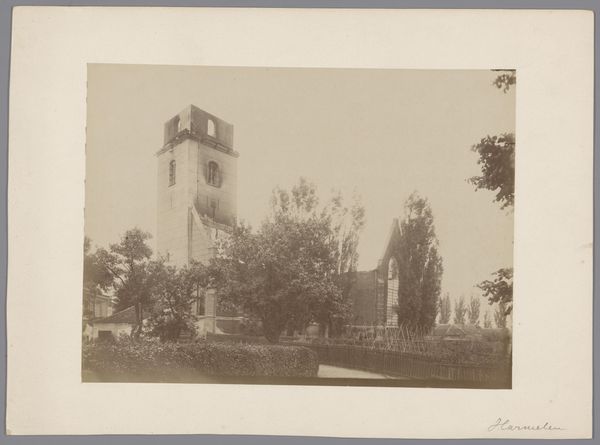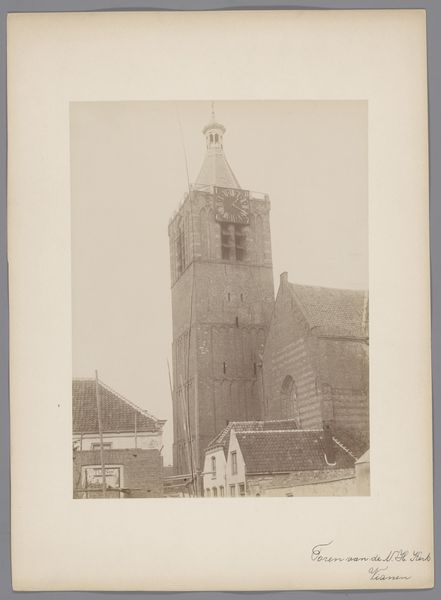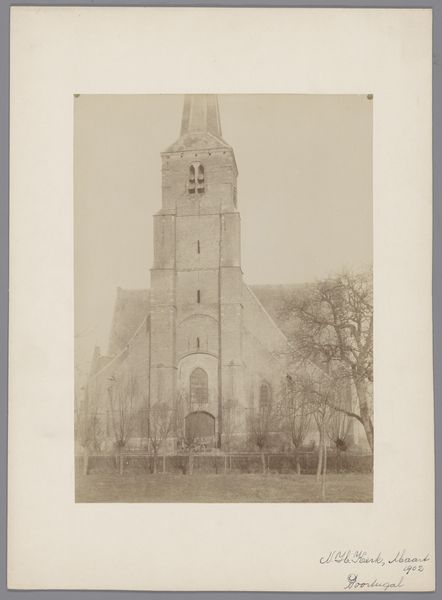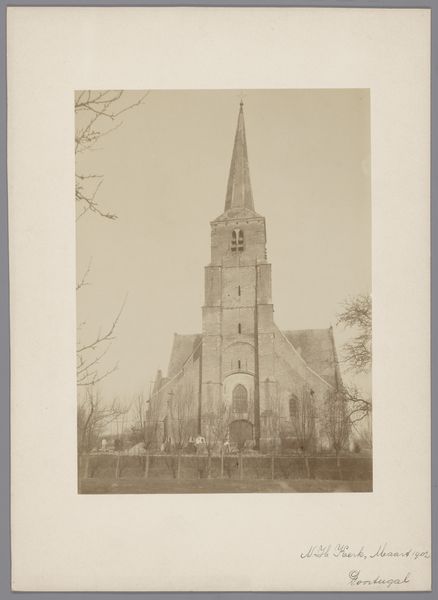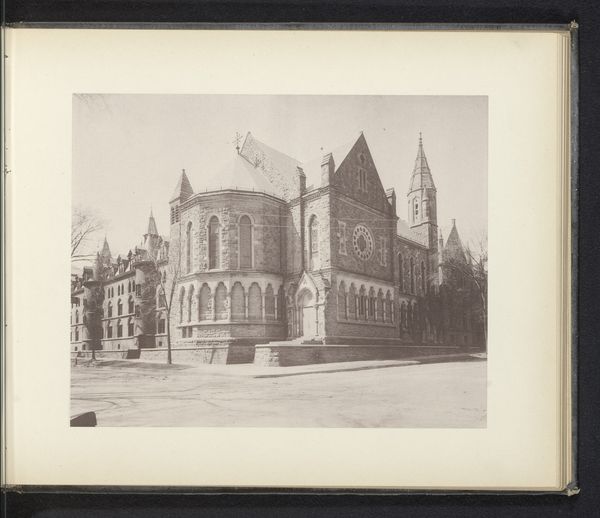
Dimensions: height 230 mm, width 171 mm
Copyright: Rijks Museum: Open Domain
Curator: This image is titled "Gezicht op de Hervormde Kerk te Burgh," taken around 1890. It appears to be a straightforward photographic depiction of the Reformed Church in Burgh. Editor: There's a captivating simplicity to it, isn’t there? The tonal range feels so restrained; it almost presents a ghostlike vision of the building, while also emphasizing the solidity and austere aesthetic typical for protestant architecture. Curator: Indeed. These architectural photographs were commissioned, in a way participating in a process of preserving historical structures through documentation. It serves both aesthetic and practical purposes within local historical societies and administration, providing information on building materials, architectural style and modifications. Editor: So, the labor of documentation becomes paramount. Consider the photographer – setting up the camera, developing the plates – all to record this imposing church. Was photography typically employed in service of the state apparatus during this era? I’m curious about the materials used. The tonality and the quality of the photographic paper itself, contribute to our understanding. It reminds us that images, beyond their ostensible subjects, also contain traces of the social conditions of their making and consumption. Curator: Absolutely, and that institutional element shaped artistic decisions, including the way buildings are viewed and presented. We might consider the relationship of architectural photography to urban planning and preservation efforts happening at the time. How did this kind of image shape public perceptions of architectural heritage? It reflects shifting attitudes toward the preservation and display of historic structures. Editor: Right, a powerful combination of representation and institutional context. By situating photographs like these, one can appreciate their importance for cultural and governmental needs, beyond purely visual appeal. Curator: A fitting point to emphasize, helping us see the confluence of aesthetic considerations, documentary impulse, and material production at play here. Editor: Exactly. It has given me a fresh appreciation for understanding photographs not merely as beautiful or historic, but rather complex historical artifacts laden with traces of institutional intention.
Comments
No comments
Be the first to comment and join the conversation on the ultimate creative platform.
